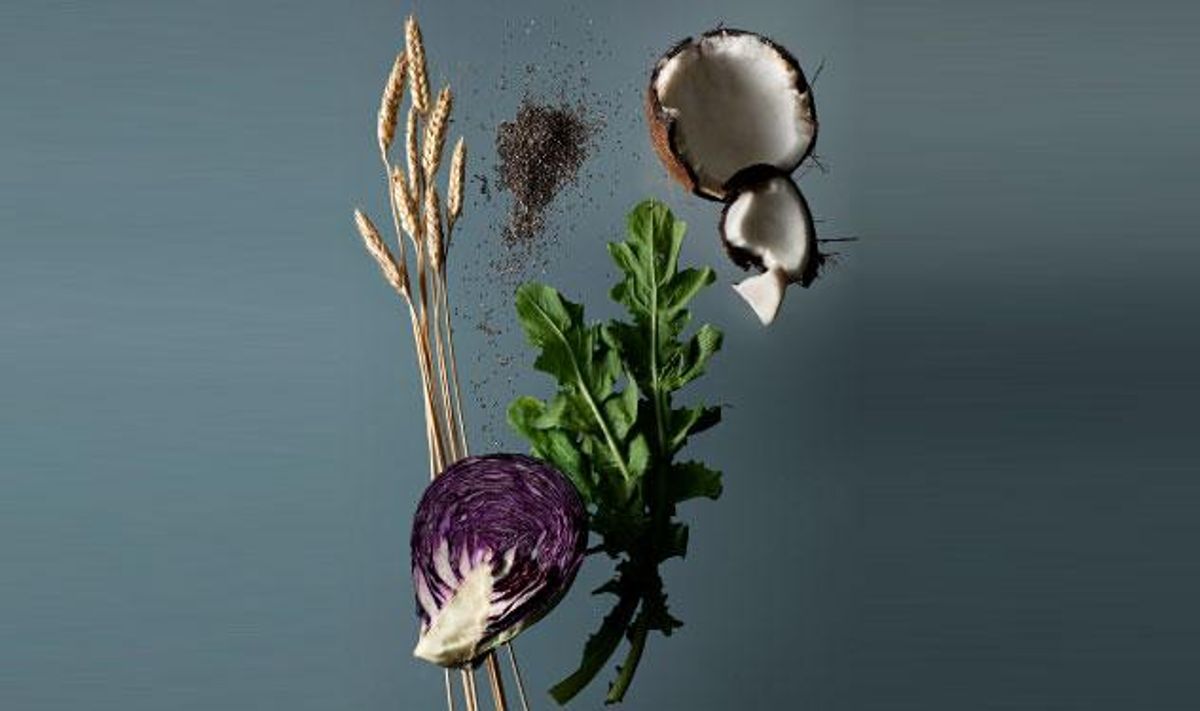Lifestyle
The Out Guide to Superfoods

Super natural: some of the world’s most powerful nutrients can be found in a store near you.
January 30 2013 1:55 PM EST
May 26 2023 1:59 PM EST
By continuing to use our site, you agree to our Private Policy and Terms of Use.

Photography by Joshua Scott
While blueberries, avocados, and salmon have become culinary celebrities, they're not the only heroes in the nutritional pantheon. And you can skip those extravagant juices and berries from South America that are overpriced, overhyped, and just plain over. We've identified some true epicurean stars that will broaden your menu, boost your health, and shrink your waist without decimating your paycheck. We've also put the notion of superfoods to the test and rounded up some options for healthy retreats that will help you start your year off on the right foot. Ready?
DANDELION GREENS
Release Its Power: These bitter greens are best paired with sweet partners, like apples or peaches, or even a savory cheese. They can also be sauteed with garlic or steamed and tossed with chicken (or, perhaps, freekeh).
Good For?: Packed with more iron and calcium than most other greens, dandelion even gives spinach a run for its money.
Fun Fact: Dandelion gets its English name from the French for "lion's tooth," a reference to the craggy leaves. The French, meanwhile, refer to the green as the decidedly less romantic "dog's lettuce."
Pickup Spots: Almost any grocery store or organic market with a generous produce aisle.
Origins: California is the dominant producer, but local varieties can also be found.
FREEKEH
Release Its Power: An excellent, protein-loaded substitute for oatmeal in the morning or replacement for couscous with dinner, freekeh is best boiled and mixed with a variety of ingredients.
Good For?: A great grain for a quick energy boost, freekeh's high protein count is perfect for vegans and vegetarians looking to keep their bodies strong.
Fun Fact: Freekeh itself is not a grain. Rather, the name comes from the way grains, typically durum, are shucked before maturation (thus locking in the protein), then sun-dried or fire-roasted to give them a nutty flavor.
Pickup Spots: Middle Eastern stores carry freekeh, as do organic groceries like Whole Foods and Trader Joe's.
Origins: Freekah comes from southern Australia and is primarily manufactured in the Middle East and the Mediterranean, through the brand Greenwheat.
TURMERIC
Release Its Power: Powdered turmeric is often used as the base for various curries, but the plant's leaves are great for wrapping and cooking food, such as fish. Fresh turmeric root can be used like its cousin, ginger, or even juiced.
Good For?: Ayurvedic medicine has for centuries celebrated turmeric's digestive and anti-inflammatory properties, while recent studies suggest turmeric can slow the development of cerebral plaques thought to cause Alzheimer's disease.
Fun Fact: Turmeric is said to have anti-aging benefits, while its orangey hue has earned it a starring role in many Indian religious ceremonies.
Pickup Spots: Powdered turmeric can be found in most grocery stores, while fresh turmeric may be limited to Indian shops in your area.
Origins: Generally from Southeast Asia, but it can be grown in the States; a few farms in Texas, where there's a large Indian community, have planted crops of their own.
COCONUT OIL
Release Its Power: Coconut oil is a healthier, more flavorful cooking alternative to vegetable oils or butter and can be used as the base for an incredible stir-fry.
Good For?: Once stigmatized for its saturated fat content, coconut oil, as current research shows, contains antioxidants, helps improve cardiovascular function, and boosts the immune system.
Fun Fact: Aside from cooking, coconut oil can be used to lubricate guitar strings. Mixed with other ingredients to combat fungal infections, it's also used as a skincare supplement.
Pickup Spots: Most health food markets carry coconut oil, and major chains like Whole Foods and Trader Joe's definitely keep it on the shelves.
Origins: Most brands are sourced from the Philippines, Sri Lanka, and Colombia.
WATERCRESS
Release Its Power: More often than not, the peppery leaf is mixed into salads, but it can be added to soup or sauteed as well.
Good For?: In addition to the iron, vitamins A and C, and calcium traditionally found in leafy greens, watercress appears to have extremely powerful anticancer properties, showing progress in the fight against lung and breast cancers.
Fun Fact: Everyone from ancient Roman warriors to pirates on the high seas have used watercress to prevent scurvy.
Pickup Spots: Watercress is readily available at local grocery stores, organic food chains, and farmers' markets, but it's at its best in the spring and fall, when its bitter taste is more tempered.
Origins: Like dandelion greens, U.S. watercress is grown primarily in California but can also be grown locally, depending on the region.
KIMICHI
Release Its Power: Typically made of fermented cabbage, radish, and other vegetables, kimchi is perfect for those on the go. It requires no cooking and can easily be incorporated into a variety of dishes, including omelets.
Good For?: Kimchi contains large amounts of vitamin A, iron, and calcium, and like other pickled foods, like sauerkraut, it comes with plenty of probiotics for healthy digestion.
Fun Fact: As Korea's national dish, kimchi has a special place in its culture: Instead of saying "cheese" when getting their picture taken, most Koreans say "kimchi."
Pickup Spots: Korean markets stock many options, as will most organic groceries. Sauerkraut and other fermented goods are available at most food stores.
Origins: Kimchi hales from Korea, but can easily be made anywhere with the right ingredients. A popular brand of sauerkraut, Gold's, is made in Brooklyn, while the Rejuvenative brand of kimchi is based in California.